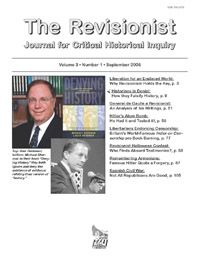Lev Mekhlis: Stalin’s Grand Inquisitor
Yuri Rubtsov, Alter Ego Stalina (Based on declassified archival documents), Svonnitsa-MG, Moscow, 1999, 302 pp. Yuri Rubtsov, Iz-za spiny vozhdya: poli ticheskaya i voyennaya deyatel’nost L. Z. Mekhlisa (Behind the Leader’s Back; The Political and Military Activities of L. Z. Mekhlis), Kompaniya Ritm, Moscow, 2003, 253 pp. Until the appearance of two recent Russian political…

